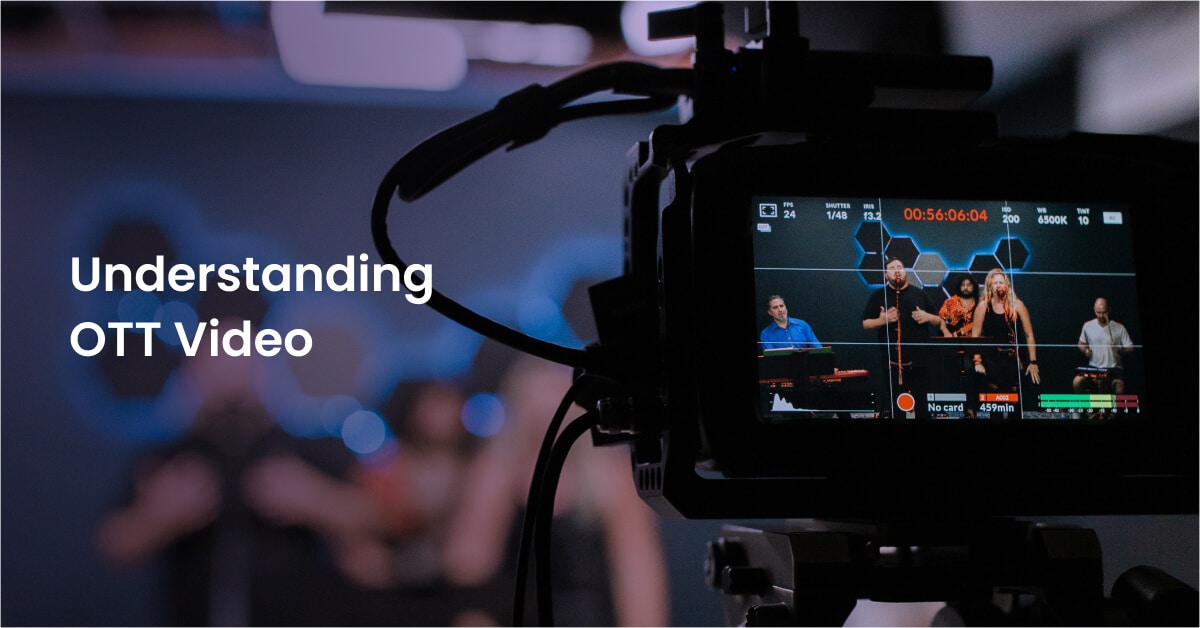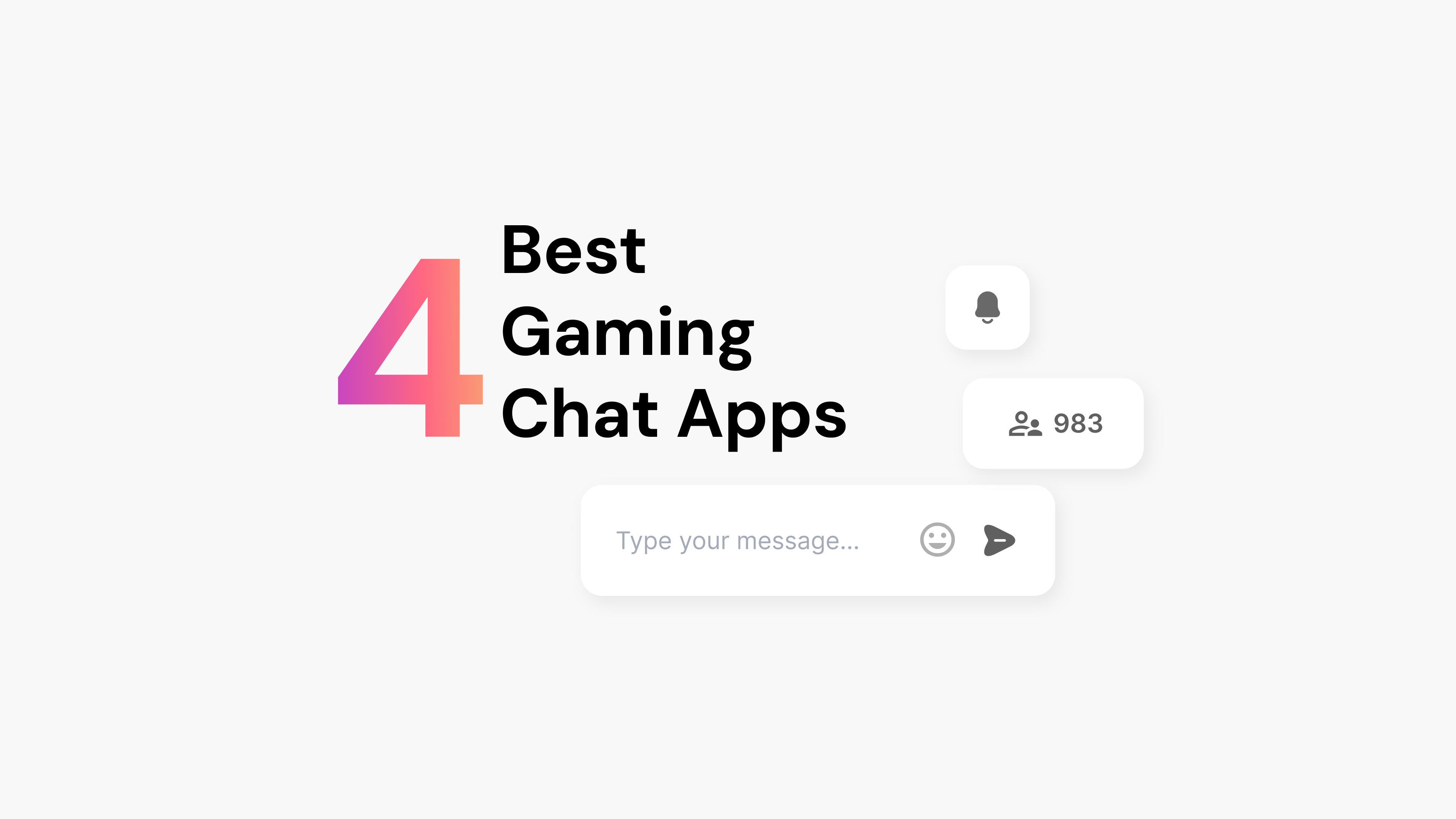Over the top content (OTT) is a booming entertainment market worth billions of dollars. Consumers are shifting their attention to OTT video more every year, a trend that has accelerated due to the pandemic. To seize the opportunity presented by the OTT video industry, take a few minutes to understand the market, significant players, technologies, and significant services.
What is an OTT Platform?
Starting with a definition of OTT is the best place to start. The OTT meaning is an abbreviation for “over the top” video. The term “over the top” is contrasted to traditional TV services provided by antenna, cable, or satellite. OTT video is provided through existing Internet services. When you think of popular video streaming services like Netflix, Disney+, and Amazon Prime, all of these services can be consider OTT video services.
For a consumer to access an OTT platform, they need to have an Internet connection which is usually separate from the OTT video service. For example, a consumer might have a cable Internet subscription and subscribe to different OTT video services depending on their entertainment services.
The OTT Streaming Industry: A Growing Market
The OTT content industry has been grown significantly over the past decade. However, the industry has indeed exploded in popularity due to the global pandemic. Consumers lost access to other kinds of entertainment, so signing up for streaming services presented an option. This boom in OTT video is clear from the market’s growth. In 2019, the global OTT video market was worth $121 billion, according to Allied Market Research. However, the industry grew to $171 billion in 2020. The market may be worth more than $1 trillion by 2027 if current growth trends continue.
There are several significant trends in the OTT market that make it different from traditional broadcast television.
- Original Programming. A decade ago, few OTT video platforms invested heavily in creating original content. That has changed significantly in recent years. According to Deadline, Netflix plans to spend $17 billion to create original content in 2021. Meanwhile, Amazon spent an estimated $465 million to create a Lord of The Rings TV show. Competing for customers without significant original content is going to be difficult. Some OTT video platforms apply geographic restrictions (“geo-blocking”). Some consumers circumvent these restrictions by using virtual private network (VPN) services.
- Increased Competition For Older Content. Peacock, the NBC OTT video platform, has stood out by taking a different approach. In 2021, the OTT video company gained “The Office,” a comedy series that aired 2005-2013. Likewise, most of the Star Trek franchise will depart Netflix in September 2021 for other platforms.
- Consumer Control. Unlike traditional television, an OTT video platform makes it easier for consumers to pick and choose the shows and movies they are interested in. In many cases, consumers access OTT video on their schedule. The exceptions are live events such as sports and live events.
- Binge Behavior. The majority of adults between 18 and 64 frequently binge-watch (i.e., watching multiple episodes or movies in one sitting), according to an April 2020 survey. This habit is partly driven by the practice of releasing an entire season of content at once.
- Increasing OTT Video Platform Competition. There are now multiple OTT video platforms with more than 100 million users. Netflix has 209 million global customers, and Disney+ has 116 million subscribers as of July 2021. Amazon Prime and Tencent Video both have more than 100 million subscribers. In addition, newer streaming services like Apple+ and HBO Max are adding millions of subscribers.
The migration of millions of consumers to OTT video has not gone unnoticed by advertisers. Keep reading to find out more about the latest advertising options.
OTT Advertising: A Fragmented Landscape
OTT advertising is currently evolving as the OTT market evolves. Some OTT video platforms are ad-supported while other platforms downplay advertising to customers. Let’s look at some of the different options available for OTT video platforms. For simplicity, we will focus on AVOD (Advertising-Based Video On Demand) and SVOD (Subscription Video On Demand).
Advertising-Based Video On Demand (AVOD)
This category of OTT video platform has the potential for a broad reach. These platforms typically charge customers either a low fee or no fee. Low-fee plans tend to include advertising, while no-fee plans rely on advertising to a greater degree.
- YouTube. With an estimated 1 billion unique visitors, YouTube is one of the largest video platforms in the world. It is important to note that YouTube offers both user-generated content and traditional content like older videos. In 2019, YouTube generated close to $5 billion in revenue for Alphabet (the parent company of Google). The average cost per click on YouTube in 2021 fell between $0.10 and $0.20. However, your advertising costs will be higher if you are focused on higher-cost audiences. YouTube video includes both free ad-supported content and subscription plans such as YouTube Premium. However, it is still possible to advertise on YouTube Premium by directly working with YouTube channels to integrate advertising messages into advertising. However, arranging direct deals for sponsorships with YouTube video creators can take more effort than using the YouTube platform. The advantage is that ads created by YouTube creators may be seen as more entertaining and less likely to be skipped. Generally speaking, sponsored videos are highest when you work with an influencer with a large number of subscribers. Costs start from $500 to $1000 per video sponsorship at the low end to more than $5000 at the high end (source).
- Hulu. The OTT video platform offers several plans. The lowest-cost plans are $5.99 per month, including ads, while the no-adds option is priced at over $11.99. For advertisers, the platform offers 7 seconds, 15 seconds, and 30 seconds ads. According to the DesignLoud Agency, Hulu advertising costs have recently declined to $20 per million impressions.
- Roku. You might be familiar due to its popular video streaming devices. However, the company now generates a significant portion of its $1 billion revenue from the Roku Channel. The Roku channel reached about 61 million in late 2020, according to The Verge. Compared to other OTT video platforms, Roku offers a broader variety of advertising choices, such as ads on the Roku channel and the Roku channel store. In addition, Roku CPM rates were $38 in 2019 before the pandemic fueled a boom in OTT video use.
SVOD (Subscription Video On Demand)
Advertising on SVOD is quite different than the platforms above. The specific advertising opportunities vary by platform.
- Netflix. The OTT video platform does not run advertising in the traditional TV sense. That said, the company has made brand arrangements with multiple companies. The New York Times reports that Subway, a restaurant chain, offered a “Green Eggs and Ham Sub” promotion alongside a Netflix show of the same name. The specific details and cost of Netflix’s brand partnerships are unclear. For the foreseeable future, advertising on Netflix is likely to be limited to the most prominent brands.
- Amazon OTT. Amazon offers non-skippable advertising opportunities through its ad-supported Fire App. The advertising target offered by Amazon has some similarities to Google Ads. Advertisers can choose to advertise to lifestyle segments like “Home Owners” or “Recent Movers.” In addition, advertisers may increase higher conversions by buying access to in-market segments to customers interested in certain types of products like bedding.
- Disney+. Today, advertising on Disney+ is limited, but that may change in the future. In a 2021 Credit Suisse conference, a Disney executive implied that the company might consider a low-cost ad-supported plan in the future. In addition, the video platform has started to add “product placement” warnings to some of its content, such as Marvel videos. For example, there is an Audi car shown in some of the Avengers movies. In other Marvel movies, characters are shown playing the video game Fortnite according to CBR. These examples suggest brands may be limited to traditional product placement on the Disney+ platform for the foreseeable future.
Finding OTT advertising opportunities takes significant effort because the market is fragmented. The upside of OTT video advertising is the potential for greater targeting. There is a greater opportunity to target advertising by location, consumer behavior, and other factors than broadcast television. For advertisers serious about building up their capabilities, seeking support from agencies may offer a solution.
OTT Technology and Tools
As OTT video increasingly competes against traditional television and video, consumer expectations for quality are increasing. As you plan your video content, it is helpful to understand the diversity of devices viewers are using.
- Computers. Laptops and desktop computers remain a popular choice for OTT video streaming. Computer users may be more likely to multitask while consuming OTT video (i.e., play a video in one browser and answer an email in another browser). On the other hand, it is easier to engage computer users in a live chat platform.
- Mobile Devices. As of Q1 2021, mobile devices accounted for 54% of global website traffic, according to Statista. The most popular mobile devices include Android smartphones (over 3 billion active Android devices), Apple smartphones, and tablets. The main disadvantage to mobile devices is the small screen size. Mobile device screens are typically 5 to 7 inches in size. As a result, videos created for larger screens may not always appear correctly. That said, mobile devices have high usage numbers. Data from eMarketer reports that the average American adult spends more than four hours per day using their mobile device in 2020.
- Connected TVs and Smart TVs. Newer TVs come preloaded with Internet capabilities and the ability to download specific apps. The TCL 6-Series 65 inch TV, considered the best TV in 2021 according to Wirecutter, comes with a Roku interface. Like many newer TVs, the TV can display 4K video. As 4K video becomes more common, OTT video creators and platforms will need to add support for higher quality video.
- Specialized Hardware. There are multiple popular OTT video devices on the market, including Roku devices, Apple TV, and others. These devices are significant because they tend to have proprietary tendencies. For example, the Apple TV has multiple Apple apps by default. Likewise, the Roku device emphasizes the Roku channel.
Ways To Make OTT Video More Engaging
Some OTT video platforms like YouTube encourage audience interaction in comments, microtransactions, and other actions. These interactive elements are significant because they help to hold the audience’s attention. To stand out in an OTT video world, content creators, broadcasters, and companies will need to emphasize interaction.
With an OTT plugin and similar technologies, adding interactive elements to a live stream video is easy. Providing a live blog may be a better fit in other contexts like sports events and live news events.
Planning and designing a video event with interactive elements takes planning. To get started, check out some of our previous posts:
Virtual events checklist: 10 steps to a stress-free virtual event
Organizing a virtual event for your audience is a powerful way to compete in a sea of OTT video platforms. This checklist will walk you through the process of planning the event. Whether you need support for event promotion, choosing virtual event technology, or practicing your delivery, the checklist has you covered.
Use content automation to grow your audience
Creating original programming is vital in OTT video. However, every company has limits in how much it can produce. Find out how content automation techniques and technologies can play a role in creating engaging online experiences. The best part? By involving your audience in content, you can set yourself from other platforms.
Find Your Niche In OTT Video
The OTT video world is set to expand significantly over the next decade. This is your moment to create memorable digital experiences for your audience. You don’t have to work from scratch either. You can invite your audience to share their questions, thoughts, and feelings by adding a live chat platform to your videos. To get started, click here to start your free trial of Arena.



